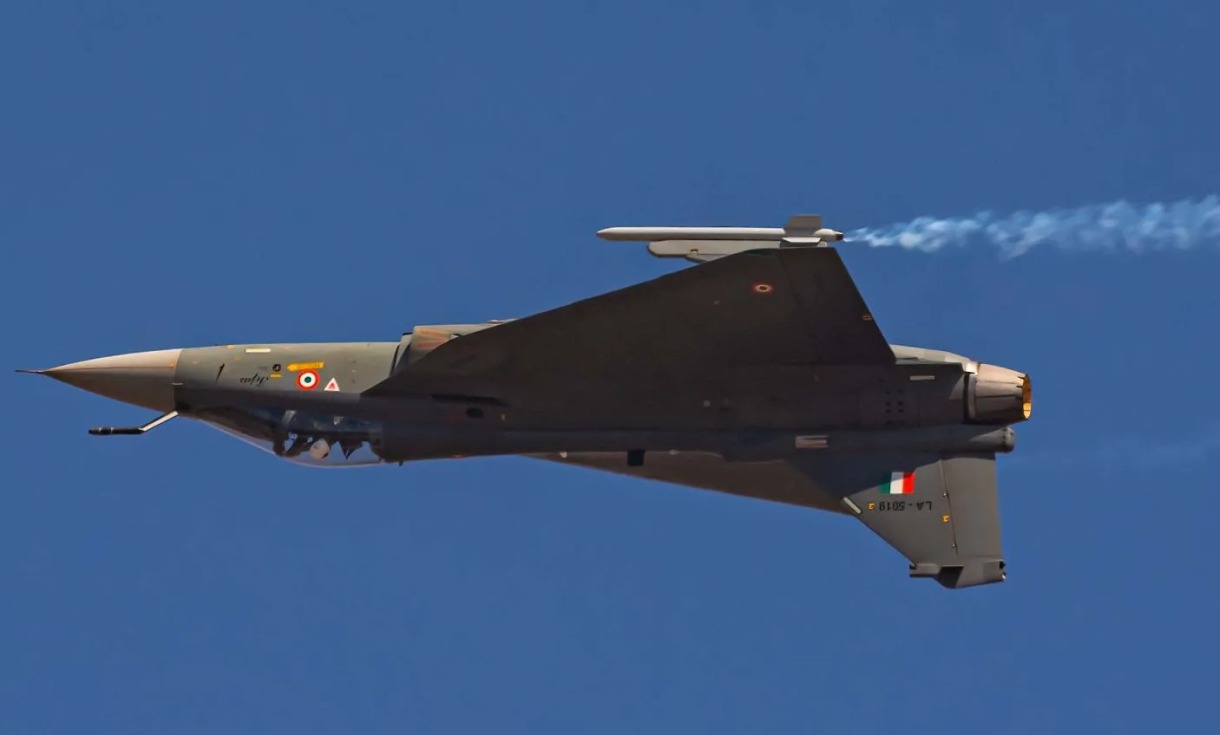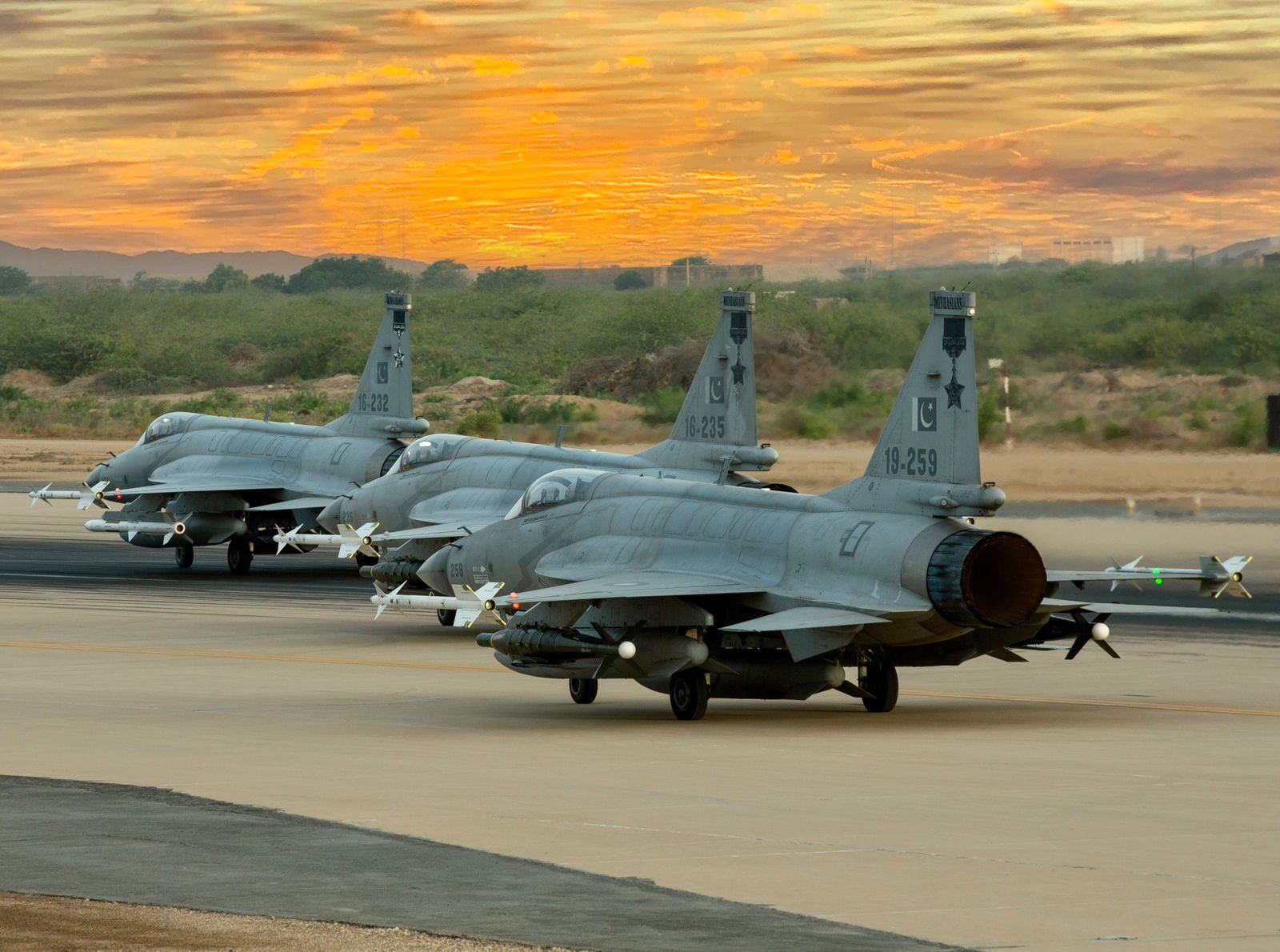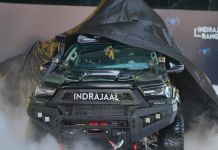Egypt is reportedly exploring the possibility of buying the Indian-made Light Combat Aircraft (LCA) Tejas. This comes after reports of Egypt assessing the Chinese J-10C ‘Vigorous Dragons’ to replace its fleet of aging F-16s.
J-10C was one of the star attractions at the international air show in Egypt earlier in September. Following the show, reports spiraled that Egypt had finalized or was looking to finalize J-10s for its force.
Images of the Chinese-manufactured Y-20 transporter trailed by six J-10 jets flying over Egypt’s Giza pyramids in formation last week drew global attention, demonstrating distance and performance capabilities in the 10,000-kilometer flight from China to Egypt.
Pakistan was the first buyer of the J-10s, which were considered to be more advanced than the JF-17s.
Indian Air Force ‘Prepares’ For China Clash; Upgrades Airbases, Develops New Runways To Check PLAAF
A high-level Egyptian delegation visited the Hindustan Aeronautics Limited (HAL) facilities. By mid-September, the delegation will be in India and learn about Tejas, which will be equipped with Indian weapons in the future.
Talks have been ongoing for a year. Cairo could opt for LCA Mk1A, the latest iteration of India’s indigenous fighter jet. Egypt is considering procuring about 18 Tejas Mk1A aircraft from India. If the sale of Tejas goes through, it will also include a maintenance, research, and overhaul (MRO) facility in Egypt.
India may also look to sell Egypt an advanced light helicopter, Dhruv. If acquired, the ALH Dhruv will be used for surveillance, transportation, and medical evacuation.
Egypt has been modernizing its air force for nearly a decade. In 2015, it ordered 24 Dassault Rafale F3-R aircraft from France and 46 MiG-29M/M2 fighters. The deliveries of the MiGs began in 2017, but the Russia-Ukraine war threw a spanner in their maintenance and their spare supply took a hit.

Indian Tejas vs Chinese J-10C
In July, in its latest posturing along the Line of Actual Control (LAC) with India, China deployed its J-10 Vigorous Dragon fighters just 300 kilometers from the Indian base that is home to Rafale fighter jets.
J-10s are the only fighters deployed on both sides of the Indian border with China and Pakistan.
With the Indian Air Force (IAF) ordering 83+97 LCA Mk1A, the fighter jet is going to be the backbone of the force’s combat fleet that will take up the gauntlet thrown by the Vigorous Dragon.
The LCA Tejas Mk1A is an improvement on the LCA MK1 and is a single-engine, multi-role fighter aircraft designed for air superiority, ground attack, and reconnaissance missions. The four big feature changes that LCA Mk1A has are the AESA radar, air-to-air refueling, advanced electronics suite, and an advanced Beyond Visual Range missile.

The Mk1A variant incorporates modern avionics, including an active electronically scanned array (AESA) radar, an improved electronic warfare suite, and advanced sensors. AESA radar systems can scan and track targets almost instantaneously because they can generate multiple beams simultaneously.
This allows for improved situational awareness and faster response times in detecting and tracking multiple targets, reducing the likelihood of targets being missed or lost during high-speed or maneuvering scenarios.
In whether the LCA Mk1A would be able to carry out Balakot-type airstrikes, former IAF chief Air Chief Marshal RKS Bhadauria (retired) had said: “In terms of strike capability, it will have the capability of a standoff weapon which will be even beyond the capability we used that time.”
So, the LCA Mk1A, with its advanced electronics suit, will detect the enemy warplane (like the JF-17) first and fire the indigenous BVR missile Astra to shoot it down.

The Indian fighter jet can carry air-to-air missiles like Astra (India’s first indigenous BVR), Derby (a medium-range BVR), and Python missiles. For air-to-ground weapons, it can carry precision-guided bomb Paveway, unguided rockets, and other precision-guided munitions.
The IAF has been betting heavily on LCA Mk1A, but it has been delayed due to supply chain issues, which delayed the delivery of General Electric’s F-404 engines.
According to technical specifications, the J-10 is larger, heavier, and has a higher speed ceiling than the Tejas LCA. In terms of structural dimensions, the J-10C is 51 feet seven inches long, while the LCA Tejas Mk1A is 43 feet four inches long.
The LCA Tejas Mk1A is based on a delta wing configuration. The J-10C’s wing area is 360 square feet, while the LCA Tejas Mk 1A has a wing span of 413 square feet.
The J-10C has a Maximum Takeoff Weight (MTOW) of 19,277 kg, whereas the LCA Tejas Mk1A’s MTOW is 13,500 kg.
Flying Soldier! How Para Gliders Are Hogging Limelight & Could Replace Para-Troopers For Special Ops
However, the Tejas LCA offers better range and agility. The J-10C is a single-engine multi-role fighter capable of operating in different weather conditions. It was launched to carry out strike and air-to-air combat operations for the People’s Liberation Air Force (PLAAF).
The J-10C is often compared to upgraded variants of the American F-16 Fighting Falcon. Like the F-16, the J-10 boasts a highly agile, aerodynamically unstable airframe stabilized by a computer in its fly-by-wire flight control system.
The J-10C is an upgraded version of the J-10B. It features an indigenous AESA radar, imaging infrared seeker (IIR) PL-10, WS-10B engine, and PL-15 air-to-air missiles.
The LCA Tejas Mk1A is propelled by a single General Electric F404, which is capable of producing 85 kN thrust with an afterburner. The J-10 can cruise at top speeds of 2305 kilometers per hour (Mach 2.1), and the LCA Tejas Mk1A can fly at top speeds of 2220 km/hr.
LCA Tejas will soon be able to carry the BrahMos supersonic cruise missile once the lighter variant, dubbed the BrahMos-NG (next generation), is ready. BrahMos is a very potent missile and a star product from the Indo-Russian defense industry.




